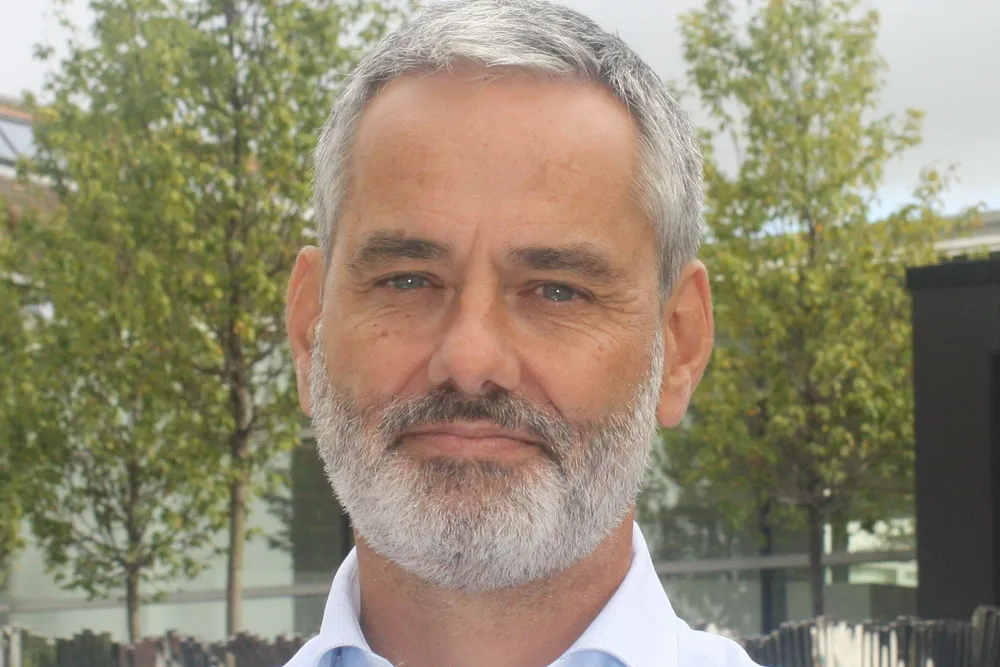Powering the future: three things we need to fix to unlock clean power at scale
OPINION | Efforts to tackle grid bottlenecks are taking shape, but much more can be done to reap the benefits of digitalisation, writes Eduardo Medina

Trillions of dollars will be poured into clean energy this year, but without modernised grids, smarter systems, and faster reforms, much of that investment risks being stranded.
As the world races toward climate neutrality by 2050 the challenge is no longer about rallying ambition or developing the technological knowhow. It is about addressing the structural barriers in front of us.
The International Energy Agency (IEA) forecasts that clean energy spending is expected to reach €2.9tn ($3.4tn) in 2025, double the amount spent on fossil fuels. Over two-thirds of all the money invested in energy globally this year will go to renewables, providing a powerful signal that global priorities are shifting.
Building more wind farms and solar parks is critical, but we also have to build smarter, more adaptable systems that can support us in the future. That needs coordination across public and private sectors, between developers, operators, regulators, and consumers.
Unlocking clean power at this scale depends on fixing three things: grid, markets, and advancing the digital transformation of our industry.
Unclogging the grid
The EU is making rapid strides in clean energy. In 2024, wind and solar accounted for 45% of Germany’s electricity mix, outpacing fossil fuels for the first time. According to energy think-tank Ember, they also present the cheapest options for power generation in nearly all EU member states. Yet the infrastructure to deliver this energy is lagging.
The IEA warns that expanding renewables without modernising the grid invites delays, higher costs, and energy insecurity. The challenge is not theoretical. According to research by Boston Consulting Group and Ecorys, grid congestion could cost the Dutch economy up to €40 billion annually.
Permitting delays, congested infrastructure, and regulatory complexity are slowing progress across the EU. If we are to meet our climate targets and maintain affordable energy, these systemic barriers must be urgently addressed.
Reforming markets, boosting resilience
Geopolitical uncertainties and market imbalances continue to expose vulnerabilities in our energy system.
Renewables are not just a route to decarbonisation — they are the foundation of a more resilient and secure energy future. Efforts to enhance grid stability and prepare for crises — whether blackouts, supply cutoffs, or cyberattacks — must centre on accelerating the clean energy transition. So resilience starts with renewables.
The good news is that governments are beginning to act. The European Grid Action Plan and the recent EU Affordable Energy Action Plan show that policymakers understand the need for action.
In the UK, the National Energy System Operator (NESO) recently developed the UK’s first national 2050 energy infrastructure blueprint — the Strategic Spatial Energy Planning (SSEP) framework — providing clear guidance for where and when to deploy new generation and storage assets.
Grid investment must accelerate, not just in new wires and substations, but also in digital solutions that enhance visibility and flexibility.
Smart grids, AI-driven forecasting, and demand response systems are essential tools in a modern energy system. These technologies help optimise assets, extend their lifespan, and support consumer affordability by having renewable energy stored and ready to go.
We must also take urgent steps to improve access to private finance, which is essential for accelerating deployment.
Market-based tools such as Power Purchase Agreements (PPAs) and double-sided Contracts for Difference (CfDs) offer crucial revenue certainty for investors and developers alike, helping to reduce the cost of capital and stimulate long-term investment. Ultimately, lowering the cost of energy to consumers in the process.
Today, only around 1 GW of solar generation is underpinned by PPAs — a fraction of what’s needed to meet our ambitions.
We must streamline regulation and remove barriers that prevent these tools from being more widely adopted. Unlocking this potential could catalyse billions in private capital, accelerate deployment, and send a strong signal in favour of clean energy investment.
Digitalisation equals supercharging the sector
At RES, we understand the power of digital integration as many of our projects combine wind, solar, and storage in a way that is monitored in real time and optimised by digital systems. This is not just about technology. It is about building systems that are adaptable, efficient, and consumer-focused.
The potential for digitalisation in the energy sector is huge and still largely untapped. According to the IEA, only around 4–5% of available energy system data is currently being used to optimise the performance of renewable assets.
That means we are sitting on a treasure trove of insights that, with the right tools, could transform the way we generate, distribute, and consume power.
Advances in AI-powered forecasting, demand response technologies, and real-time analytics are already beginning to shift the dial—helping us extend the life of assets, reduce operational costs, and build a more flexible, resilient grid. This type of digitalisation is exactly what we need to supercharge efficiency, innovation, and system-wide transformation across the clean energy sector.
What happens next?
Europe has a once-in-a-generation opportunity to lead the global energy transition - not just through clean generation, but by building a system that is modern, resilient, and ready for the future.
This is no longer a question of potential. The tools, the technologies, and the capital exist. What is needed now is the will to act - faster, smarter, and together.